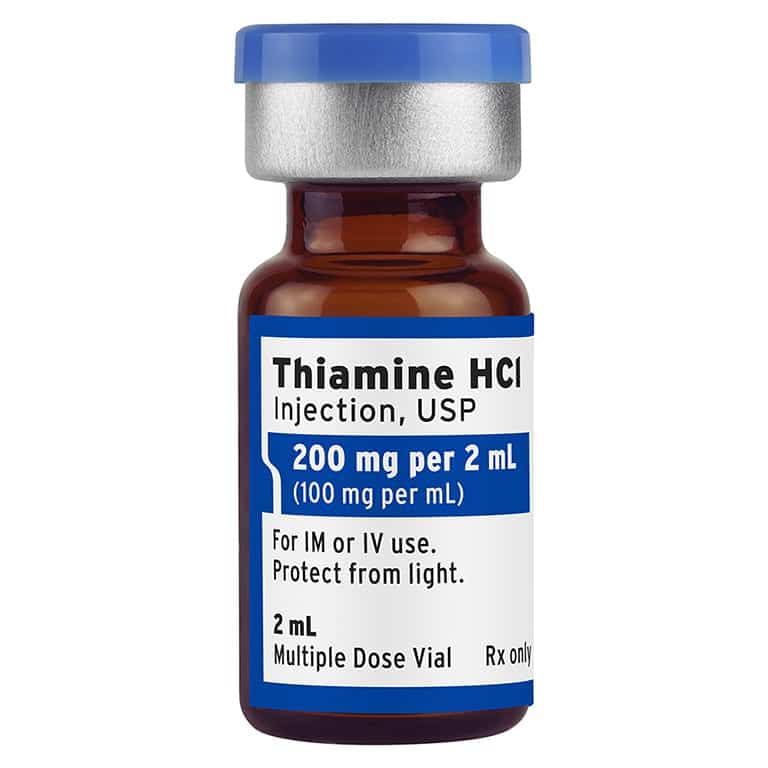Thiamine (vitamin B1) is a water-soluble vitamin that has important phosphorylated relatives. B1 deficiency is a well known nutritional problem I encounter in patients with chronic alcoholism which can lead to syndromes like Wernicke-Korsakoff syndrome and beriberi. B1 deficiency can also damage the brain’s mammillary bodies, thalamus, hypothalamus, and cerebellar vermis as these areas tend to have relatively high metabolic demands. As an intensivist, I often administer intravenous thiamine supplementation for several days in patients with known alcoholism and/or coming in with altered mentation.
So what’s the big deal about “thiamine before glucose?”
Thiamine is phosphorylated into thiamine pyrophosphate (TPP), an incredibly important cofactor involved with cellular aerobic respiration and the production of ATP – our energy currency molecule. The first step in aerobic respiration is glycolysis which transforms glucose into pyruvate. At this point, pyruvate has two major options -> proceed into the pyruvate dehydrogenase complex (PDC) en route to the TCA cycle (which requires TPP) or get fermented into lactate. In thiamine deficiency, low amounts of TPP force much of the pyruvate down the lactate pathway which can ultimately lead to acidosis. If we start administering glucose, we generate and force MORE pyruvate down the lactic acid pathway only perpetuating the problem. Thiamine supplementation restores TPP and promotes the formation of more ATP via aerobic respiration.
Furthermore, TPP is required in the pentose phosphate pathway – a series of biochemical reactions that produces NADPH which, in turn, keeps glutathione reduced to help mitigate oxidative damage. No thiamine -> no TPP -> more oxidative damage.
Drop me a comment below with questions!







About the Thiamine before Glucose thing I think some people take it to far, Holding it to be a rule that can not be deviated from. However, In an emergency it appears completely safe to administer glucose before thiamine as long as thiamine is administered in a short time later. I cant remember the article I read about it but will keep looking. It makes sense though, In an emergency with significant hypoglycemia administering an amp or two of D50 to keep the patient alive and get the thiamine in as soon as you can. Better alive and acidiotic then dead with a good pH. This is more of a concern in the pre-hospital setting then in the hospital, especially when you have a patient you have never seen before with 3 conflicting histories shouted at you by hysteric family and are 15-20min from a location designed to provide care. Leaving someone comatose because they may have a thiamine deficiency, I think is a bad bet. By the way I LOVE your site and enjoy your writing. Love the Cheat Sheet Too, Have like 5 Copies stashed around the OR, found one in my des vaporizer last week.
I absolutely 100% agree with you. It’s just one of those “textbook” medicine versus “clinical medicine” situations. And I appreciate your kind words regarding the site! 🙂
I figured you would agree and figured you had already held that position before I made the post. I just think that when they teach things they need to be careful about making the absolute rules. I so often here people repeat the claims of things as rules and the one rule about medication use with people is that there is an exception, and likely multiple, to every rule. It makes sense if you think about how everyone is different and can have a different effect from each Med. Your welcome about the words about your site and I really do love this site. You have really done a great job sharing your knowledge. And again I keep finding your cheat sheet in my des vaporizer, it appears to increase the MAC by 0.5%